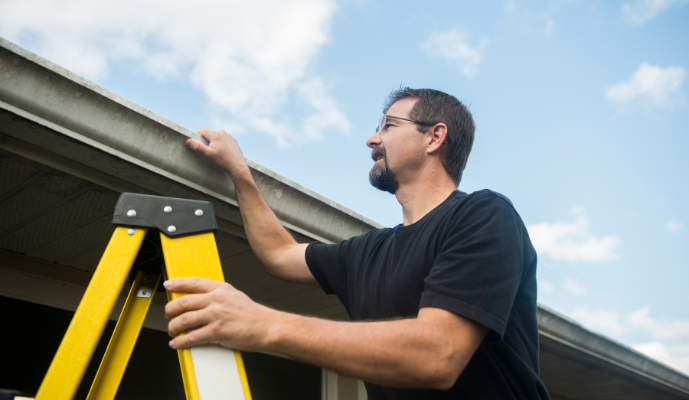Understanding Roof Insurance Claims
Navigating the roof insurance claim process can be daunting, especially after experiencing roof damage from a storm or other unforeseen events. This guide will help you understand how roof insurance claims work, what steps to follow, and how to ensure you receive the compensation you deserve.
Step 1: Assessing the Damage
The first step in the roof insurance claims process is to assess the damage. After a storm or other incident, inspect your roof for visible signs of damage, such as missing shingles, leaks, or structural issues. Document the damage with photographs and detailed notes, as this information will be crucial when filing your insurance claim.
Step 2: Review Your Insurance Policy
Before filing a claim, review your homeowner’s insurance policy to understand your coverage. Policies can vary significantly, so it’s important to know what types of roof damage are covered and the extent of your insurance coverage. Pay attention to specific clauses related to roof replacement costs, actual cash value, and replacement cost value.
Step 3: Contact Your Insurance Provider
Once you’ve assessed the damage and reviewed your policy, contact your insurance provider to report the damage and start the claims process. Provide them with all necessary documentation, including photographs and a detailed description of the damage. Your insurance company will assign an insurance adjuster to evaluate the damage and determine the cost of repairs or replacement.
Step 4: Meeting the Insurance Adjuster
The insurance adjuster plays a crucial role in the roof insurance claim process. They will visit your property to inspect the roof damage and prepare a report for the insurance company. Be present during the inspection to answer any questions and provide additional information if needed. This step ensures that all damage is accurately documented.
Step 5: Getting Repair Estimates
After the insurance adjuster’s visit, obtain repair estimates from reputable contractors. It’s wise to get multiple quotes to compare prices and services. A roofing contractor can provide a detailed estimate for the necessary repairs or replacement, which will be submitted to your insurance company for approval.
Step 6: Filing the Claim
With all the necessary documentation and estimates in hand, you can now file a claim with your insurance company. Ensure that all required forms are completed accurately and submitted promptly. Keep copies of all correspondence and documentation for your records.
Step 7: Approval and Payment
Once your claim is submitted, the insurance company will review the information and make a decision. If approved, you will receive a payout based on your policy’s terms. This payout may cover the actual cash value or replacement cost value of the roof repairs or replacement, depending on your coverage.
Step 8: Hiring a Contractor
With the insurance payout, you can now hire a reputable contractor to perform the necessary repairs or roof replacement. Ensure the contractor is licensed, insured, and experienced in handling roof insurance claims. Monitor the work to ensure it meets your satisfaction and complies with local building codes.
Common Challenges in Roof Insurance Claims
Denied Claims
One of the most common challenges homeowners face is having their claims denied. This can happen for various reasons, including insufficient documentation, pre-existing damage, or coverage exclusions in your insurance policy. If your claim is denied, review the denial letter carefully and consider appealing the decision with additional evidence or seeking legal advice.
Discrepancies in Damage Assessment
Sometimes, there may be discrepancies between the insurance adjuster’s assessment and the contractor’s estimate. In such cases, it may be necessary to get a second opinion or negotiate with your insurance company to reach a fair settlement.
Delays in the Claims Process
The roof insurance claims process can be lengthy, with potential delays due to high claim volumes after major storms or natural disasters. Stay in regular contact with your insurance company and follow up on the status of your claim to ensure timely processing.
Tips for a Smooth Roof Insurance Claim Process
-
Document Everything: Keep detailed records of all damage, correspondence, and interactions with your insurance company and contractors.
-
Understand Your Policy: Familiarize yourself with your homeowner’s insurance policy and its coverage limits.
-
Act Quickly: Promptly report damage and file a claim to avoid delays and potential complications.
-
Hire Qualified Professionals: Work with experienced and reputable contractors to ensure quality repairs and accurate estimates.
-
Stay Informed: Keep yourself updated on the status of your claim and follow up regularly with your insurance provider.
Roofing Services by Eagle Roofing
At Eagle Roofing, we specialize in assisting homeowners with their roofing insurance claims. Our experienced team can help you assess damage, file a claim, and ensure that your roof is repaired or replaced to the highest standards. Contact us today for a consultation and let us help you protect your home.
Conclusion
Filing a roof insurance claim can be a complex and time-consuming process, but understanding how roof insurance claims work can help you navigate it more effectively. By following these steps and tips, you can ensure that your roof damage claim is handled smoothly and that you receive the compensation you deserve for repairs or replacement.




